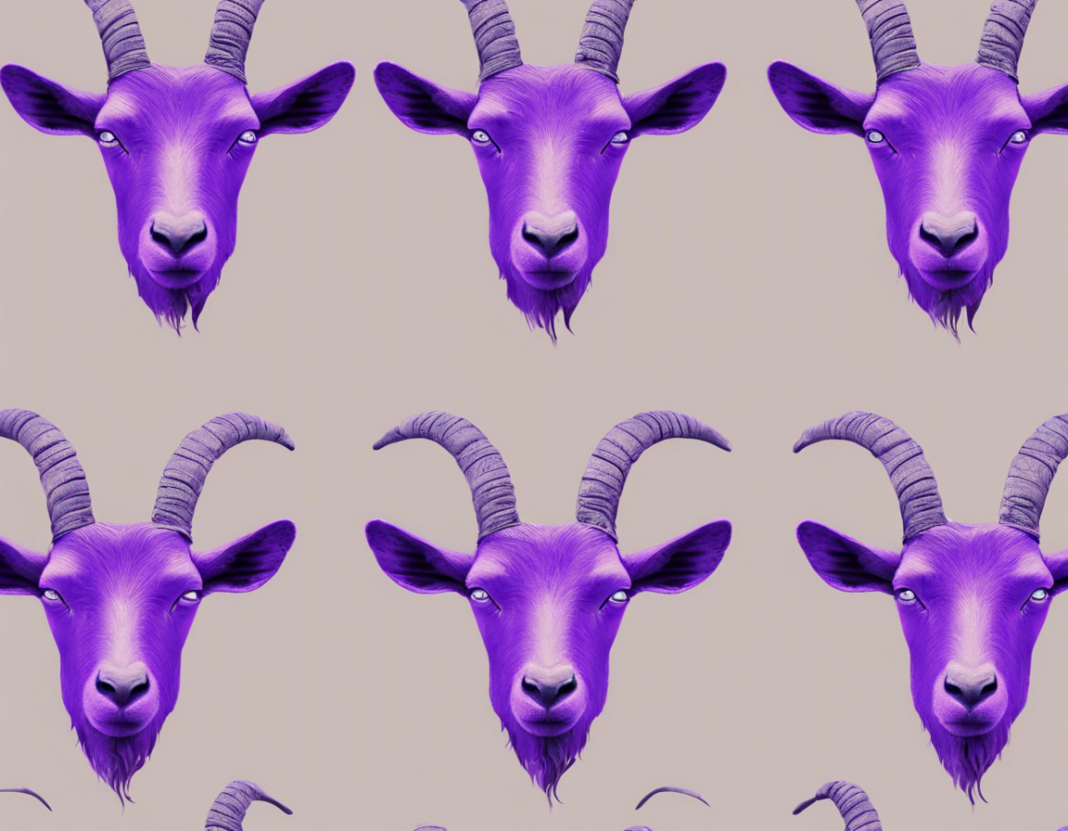Nestled in the highlands of the Himalayas, among the stunning landscapes and mystical cultures, resides a unique creature that captivates the imagination and invokes a sense of wonder – the rare Purple Goat. This remarkable animal, known for its distinctive appearance and mysterious origins, has long been a subject of fascination for scientists, conservationists, and nature enthusiasts alike.
The Enigmatic Purple Goat
Appearance and Characteristics
The Purple Goat, scientifically classified as Capra Hirpurpurea, derives its name from the unusual hue of its coat, which ranges from a deep lavender to a rich indigo. This striking coloration is a result of a rare genetic mutation that affects the production of melanin in the animal’s fur. Apart from its mesmerizing color, the Purple Goat possesses long, spiraled horns that can reach impressive lengths, adding to its otherworldly charm.
In terms of size, the Purple Goat is comparable to its more common relatives, such as the Himalayan Tahr, with a sturdy build and strong hooves that allow it to navigate the rugged terrain of its mountainous habitat with ease. Its eyes, a piercing amber hue, seem to hold a sense of wisdom and ancient knowledge, further adding to the air of mystery that surrounds this majestic creature.
Habitat and Behavior
The Purple Goat is primarily found in the remote regions of the Himalayas, where the air is thin, and the landscape is dotted with rocky outcrops and lush meadows. These creatures are well-adapted to the harsh climate of the high altitudes, thanks to their thick, insulating fur and robust physique. Solitary by nature, Purple Goats are often spotted wandering the mountainside alone, or in small groups consisting of females and their offspring.
Despite their solitary tendencies, Purple Goats are known for their social intelligence and intricate communication methods, which involve a combination of vocalizations, body language, and scent-marking. They are also skilled climbers and can scale steep cliffs with agility, using their powerful limbs and sure-footedness to navigate the treacherous terrain.
Conservation Status and Threats
The Purple Goat faces numerous threats to its survival, primarily due to habitat loss, poaching, and climate change. As human populations encroach further into the remote regions where these creatures reside, their natural habitats are being fragmented and degraded, leading to a decline in population numbers. Additionally, the illegal trade in wildlife poses a significant risk to Purple Goats, as their distinctive pelts are highly sought after in some markets.
Conservation efforts are underway to protect the Purple Goat and ensure its continued existence in the wild. These initiatives involve the establishment of protected areas, enforcement of anti-poaching laws, and research into the species’ biology and behavior. By raising awareness about the plight of the Purple Goat and promoting sustainable practices in the region, conservationists hope to secure a future for this iconic Himalayan species.
Fascinating Facts about the Purple Goat
- The Purple Goat’s distinctive coloration serves as a form of camouflage in its rocky mountain habitat, allowing it to blend in with the surrounding terrain and evade predators.
- Despite its name, the Purple Goat’s coat can appear different shades of purple depending on the lighting conditions and the angle of observation.
- Purple Goats are herbivores, feeding on a diet of grasses, shrubs, and lichens that grow in the high-altitude meadows of the Himalayas.
- The ancient legends of the Himalayan people speak of the Purple Goat as a symbol of wisdom, strength, and resilience, revered for its mystical aura.
- Female Purple Goats are known for their fierce protectiveness of their young, using their horns and hooves to ward off potential threats.
FAQs about the Rare Purple Goat
Q: Why is the Purple Goat purple?
A: The Purple Goat’s unique coloration is the result of a rare genetic mutation that affects the production of melanin in its fur, giving it a vibrant purple hue.
Q: How rare is the Purple Goat?
A: The Purple Goat is considered extremely rare, with only a small population believed to exist in the wild due to its limited range and specific habitat requirements.
Q: What is being done to protect the Purple Goat?
A: Conservation efforts, including the establishment of protected areas, anti-poaching measures, and public awareness campaigns, are being undertaken to safeguard the Purple Goat’s future.
Q: Can the Purple Goat be domesticated?
A: Due to its solitary nature and specialized habitat requirements, the Purple Goat is not easily domesticated and is best left to thrive in its natural environment.
Q: Are there any cultural significance associated with the Purple Goat?
A: In Himalayan folklore and traditions, the Purple Goat is often revered as a symbol of strength, wisdom, and resilience, with various myths and legends attributing mystical qualities to the creature.
In conclusion, the rare Purple Goat stands as a unique and captivating symbol of the biodiversity and wonder that exists in the remote corners of our planet. With its striking appearance, mysterious origins, and endangered status, this enigmatic creature serves as a reminder of the importance of conservation efforts and the need to protect our fragile natural heritage for generations to come.

